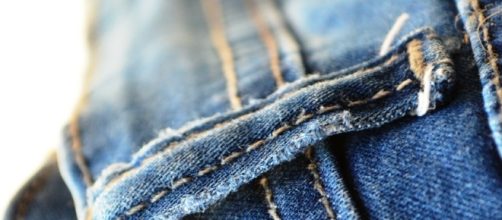It’s been seven years since ethical fashion brand, Everlane, was founded. They’re a company that’s committed to transparent pricing, high quality, and sustainable practices. And even though they offer wardrobe basics and staple pieces, it wasn’t until a few weeks ago that they launched their first denim line.
Everlane’s new denim line offers five styles
Everlane provides a variety of fits. Women have three styles to choose from: the high-rise skinny, mid-rise skinny and the modern boyfriend jeans. Men have the choice of straight or slim fit. All jeans are made from Japanese denim, and the color options are basic yet classic, including white, black, dark indigo and traditional blue.
What makes Everlane’s denim different?
Everlane founder, Michael Preysman, is proud that his company is creating denim that doesn’t damage the environment. In an interview with Esquire, Preysman shared that the denim market “wreaks havoc on the environment with many factories polluting the water supply.”
Visitors to Everlane’s website can see inside Saitex, “the world’s cleanest denim factory,” where their newest denim range is produced. Among many other praiseworthy characteristics, this Japanese plant uses far less water than other competing facilities.
Denim factory uses less water and energy in jean production
Typically, one pair of jeans requires 1,500 liters of water. A pair of Everlane jeans only uses 0.4 liters of water.
Dyes and toxins are then removed from the water with a very advanced filtration system that leaves the water “so clean you can drink it.”
The factory also uses alternate sources of energy, including solar panels, which helps to reduce any impact on the environment. In fact, they’ve cut their energy usage by 5.3 million kilowatts each year, and their CO2 emissions were reduced by almost 80%.
Furthermore, they air-dry their jeans which saves on energy usage.
Denim byproducts are reused in brick-making industry
Unbeknownst to many jean lovers, the production of denim leaves a toxic substance behind, usually referred to as sludge. Instead of leeching into the environment, Saitex ships this substance to a brick factory, where it is mixed with concrete, which cancels out its toxicity and offers a sustainable alternative to this hazardous material.
Transparent, affordable pricing sets Everlane denim apart
Another reason why Everlane denim is different is because they’re committed to creating jeans that aren’t overpriced. For a pair of Everlane jeans, the consumer pays $68, which is not only reasonable, but much less than the traditional retail price, which rings in at $140.
But perhaps Everlane’s $68 pair of jeans is even more appealing due to their transparent pricing. For every fit, the consumer is shown the actual cost of the materials, hardware, labor, duties, and transportation needed to make a pair of jeans. Thanks to their transparency policy, Everlane denim is truly a denim “you can get behind.”
In their online campaign, the viewer is told that Everlane denim was worth the wait.
And it seems that tens of thousands of people agree. In fact, 44,000 people were on the waiting list for Everlane’s collection. The coming months will reveal customer satisfaction; however, it seems that Everlane’s denim incentive is off to a good start.


